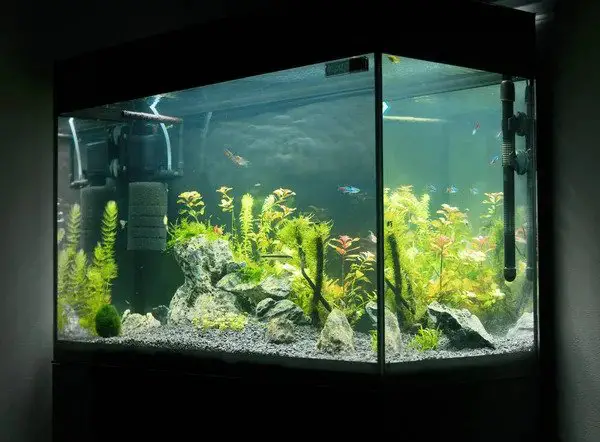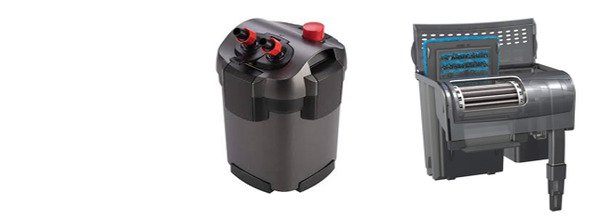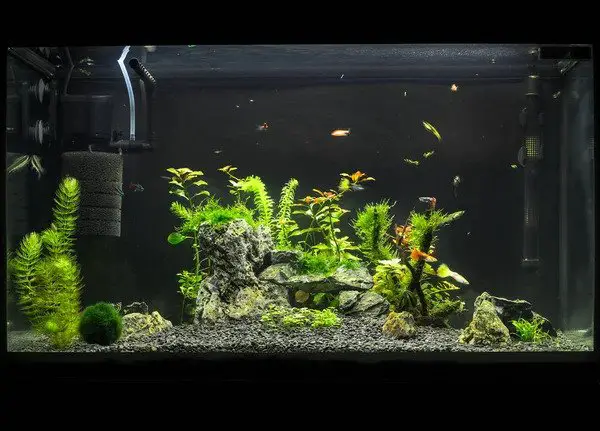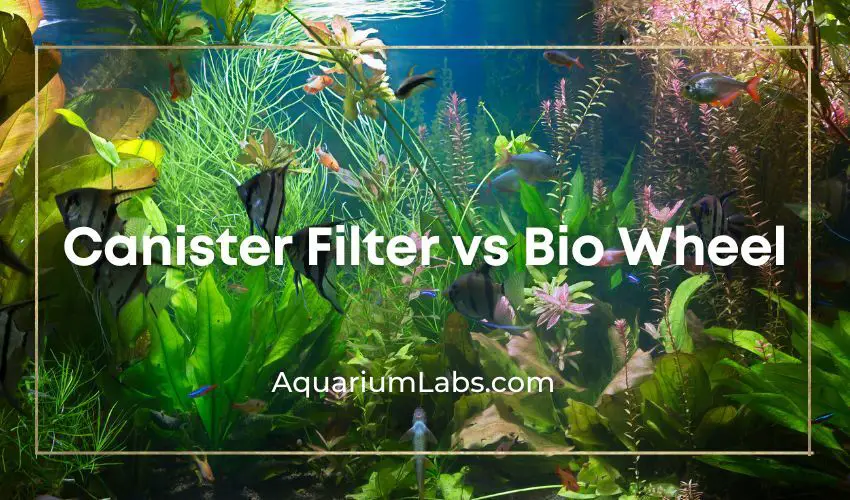One of the concerns of hobbyists is the right power filter. The danger of over-filtering is what they want to avoid. You may have heard about canister filters and how they compare to bio wheels.
If you are looking for a detailed canister filter vs bio wheel, here is one.
Read on to learn more.

Comparing Power Filters: Canister Filters and Bio Wheel

| Canister Filter | Bio Wheel | |
| Versatility | Very Versatile | Low Versatility |
| Maintenance | Mid | Low |
| Power | High | Mid |
| Noise | Low | Mid to High |
| Setup | Challenging | Easy |
| Cost | Expensive | Cheap |
Setup Comparison
It is easier to set up the bio wheel filters fast and more conveniently than the canister filters. Simply fix the filter on the tank, install the filter media in the back and turn it on.
The aquarium water will go up the bio wheel filter, into the filter media, and out on the bio wheels.
But a canister filter setup is not that straightforward. Because you do not want to over-filter your aquarium water, you will have to first do some research to find the right size for your aquarium. After that, you may have to upset the aquarium water as you lay the tube and connect them to your canister filter. This is a lot of work compared to how easy it is to fix bio wheel filters.
Remember to run the bio wheel with some tap water. Usually, some bio wheels come with activated carbon in their cartridges. You may contaminate the water if you do not rinse the filter before installing it.
Difference in Operation
Canister filters operate quieter than bio wheel filters. They usually have an intake tube that collects water. The water is forced through the filter media and pumped back into the tank after filtration.
A canister filter is also much more versatile and better at mechanical filtration than the bio wheels. It is often used for large tanks; you can always modify them to deliver biological and chemical filtration.
A bio wheel is not as powerful as a canister filter. But a bio wheel is the power filter to go for if you are using small aquariums. They usually come with a cartridge and a bio-wheel to return the water to the tank.
These bio wheels usually have only a small sponge to catch debris compared to the multiple types of filtration foams and floss that a canister can hold to filter debris.
The bio wheels help supply more oxygen to supplement the dissolved oxygen in the water as the wheels spin to supply the filtered water. This extra oxygen increases the biological filtration as the beneficial bacteria have more oxygen to work with. This design contrasts with the pressurized system of a canister filter.
But many innovative hobbyists tackle this challenge using filter media with larger surface areas. The larger surface translates to more space for bacteria which, in turn, translates to increased biological filtration.
Ease of Maintenance Comparison

A canister filter will take much more time to clean and maintain than many other power filters. You would have to first take the filter apart. This often starts with disconnecting the hoses.
After that, you will have to take it to your sink, get all the media out, and rinse everything. After rinsing, you want to put it back together and reconnect the hoses. This takes a lot of time compared to bio wheels and is why many canister filter owners hardly do maintenance on their canister filter.
Bio wheels need some cleaning too. But you can clean your hang-on bio wheel in seconds, unlike a canister filter which will take around 8 to 12 minutes to clean.
You want to take care to clean the bio wheels but not too hard. You want to only wash it barely so that you can save some bacteria for filtration. You also want to check the filter cartridge.
Some mechanical issues that users commonly associate with the bio wheels include a broken wheel, axel jamming, or excess noise.
While there are maintenance procedures for a broken wheel and a jammed axel, there is hardly one for the noise. Perhaps, you may have to buy one that has a cover over the bio wheels. But this will only reduce the noise instead of getting rid of it.
Choosing One: Canister Filter vs Bio Wheel
Apart from the cost and the time it takes to maintain each power filter, there are other factors to consider when choosing between a canister filter and bio wheels. Some are:
Efficiency
How efficient a filtration system is, depends on several factors; how much power it has, how much noise it makes, how much water is filtered, and many other concerns.
A canister filter does not make noise. It is very quiet and filters with pressure, so a larger surface area is filtered.
But a bio wheel pales in comparison. It makes noise and works from only one side of the aquarium. So it may not be useful for an aquarium with a much bigger surface area.
Tank Size
For smaller aquariums, a bio wheel is a much better power filter. The pros of this filter outweigh the pros of a canister filter. It is not too expensive and is easier and faster to maintain.
But a canister is the right choice for a larger surface area. A canister filter is better because the media basket is big enough to hold all kinds of media. You can use biological or mechanical filtration like sponges and media floss.
It will also ensure you get better water flow than a bio wheel.
Bottom Line: Canister Filter vs Bio Wheel

Whether for your saltwater or freshwater setup, your fish need a filter system to keep the water clean and healthy. The choice to decide which to use will depend on some of the concerns discussed in this article.
You want to pay close attention to how much surface area you have in the tank, among other things.
Related Reading:

